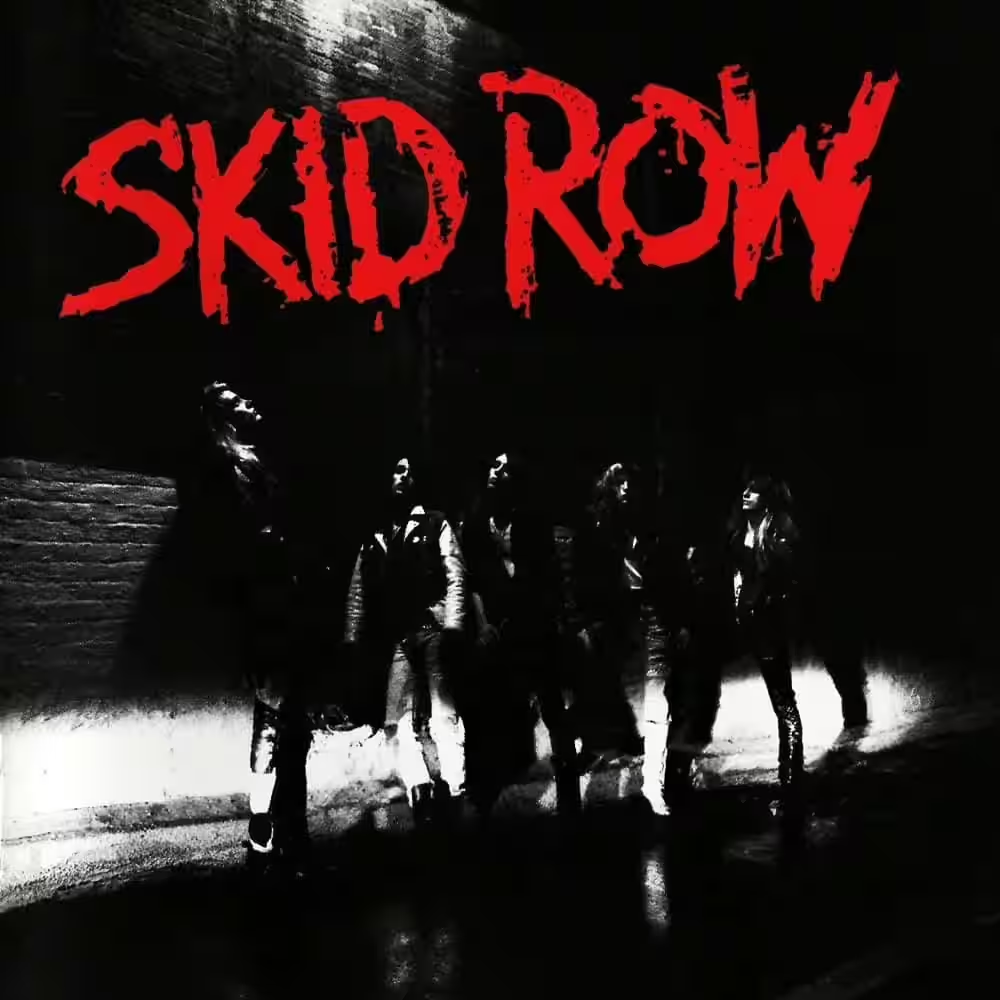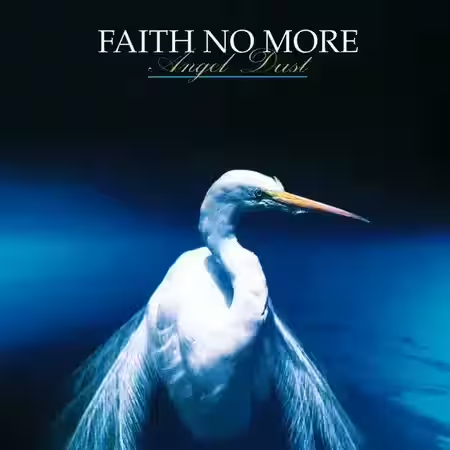
Introduction
Released on January 24, 1989, Skid Row’s self-titled debut album marked a pivotal moment in the late 1980s rock scene. As a powerful entry into the world of glam metal, this album set the stage for Skid Row to become one of the defining bands of their era. The album’s mix of raw energy, compelling lyrics, and memorable riffs quickly earned it a place in the annals of rock history. With its success, Skid Row cemented their place in the pantheon of rock music, showcasing their potential to rival contemporaries like Bon Jovi and Mötley Crüe.
This article will delve into the genesis of the album, the recording process, its commercial performance, and its lasting legacy. We will explore the intricate details behind the album’s creation, the critical reception it received, and its influence on both its contemporaries and future generations of musicians. Additionally, we’ll examine the singles that propelled Skid Row to fame and the cultural impact of their music.
| Attribute | Details |
|---|---|
| Release date | January 24, 1989 |
| Album title | Skid Row |
| Genre | Glam metal, Hard rock, Heavy metal |
| Total runtime | 39:28 |
| Number of tracks | 11 |
| Record label | Atlantic Records |
| Recording studio | Royal Recorders, Lake Geneva, Wisconsin |
| Producer(s) | Michael Wagener |
Skid Row’s debut was not only a commercial triumph but also a cultural milestone. It resonated with a generation of fans who found solace and rebellion in its anthems. As guitarist Dave Sabo once remarked, “We were just a bunch of kids with big dreams and bigger guitars, trying to make a mark.” The album’s success propelled Skid Row into the limelight, earning them a spot alongside some of the biggest names in rock music.
The album’s influence is still felt today, with many artists citing Skid Row as a key inspiration in their musical journey. From the energetic “Youth Gone Wild” to the haunting ballad “I Remember You,” the album remains a staple in the collections of rock enthusiasts worldwide.
The Genesis of “Skid Row”
In the late 1980s, the rock music scene was a melting pot of styles, with glam metal dominating the airwaves. It was in this vibrant and competitive landscape that Skid Row emerged, bringing with them a fresh take on the genre. Formed in 1986 in Toms River, New Jersey, the band quickly gained a reputation for their high-energy performances and gritty sound. The formation of Skid Row was serendipitous, as childhood friends Dave Sabo and Rachel Bolan shared a mutual passion for music that would soon become the foundation of the band.
Prior to the release of their debut album, Skid Row had been making waves with their live performances across the Eastern United States. Their early work laid the groundwork for what would become a defining sound, characterized by powerful vocals, intricate guitar work, and a raw, rebellious spirit. With the addition of charismatic frontman Sebastian Bach in 1987, the band solidified their lineup and began crafting the songs that would make up their debut album.
The creative force behind Skid Row was a collaborative effort, with Sabo and Bolan leading the charge as primary songwriters. Their chemistry was evident in tracks like “Youth Gone Wild” and “18 and Life,” which showcased their ability to blend melodic hooks with hard-hitting rock. The band’s dedication to their craft was unwavering, and their determination to succeed was evident in every note they played.
Below is a table listing the band members and their respective roles:
| Band Member | Instrument/Role |
|---|---|
| Sebastian Bach | Lead vocals |
| Dave Sabo | Guitar, backing vocals |
| Scotti Hill | Guitar, backing vocals |
| Rachel Bolan | Bass, backing vocals |
| Rob Affuso | Drums, percussion |
Financially, the band faced several challenges, particularly concerning their royalties. Managed by Doc McGhee and signed under Jon Bon Jovi’s influence, they unknowingly gave away a significant portion of their royalties to Bon Jovi and Richie Sambora’s publishing company. Despite these hurdles, Skid Row pressed on, driven by their passion and commitment to their music.
The album’s title, simply “Skid Row,” was a reflection of the band’s identity and ethos. The cover art, designed by David Michael Kennedy, captured the gritty essence of the band, setting the tone for the music within. The album artwork became iconic, symbolizing the raw energy and rebellious spirit that Skid Row embodied.
Recording Process
The recording process for Skid Row’s debut album was a testament to the band’s dedication and perseverance. Set against the backdrop of the Royal Recorders studio in Lake Geneva, Wisconsin, the sessions were both intense and rewarding. The studio, located in a hotel, provided a unique environment that allowed the band to focus solely on their music, free from distractions.
Under the guidance of renowned producer Michael Wagener, Skid Row honed their sound, capturing the raw energy and emotion that defined their music. Wagener, known for his work with artists like Dokken and Metallica, brought a wealth of experience to the project, helping the band to refine their sound and bring their vision to life. The recording sessions were meticulously planned, with the band adhering to a strict schedule to ensure that every track was perfect.
While specific details about the studio equipment used during the recording sessions are not explicitly documented, it is likely that they employed state-of-the-art technology typical of the time. This would have included high-quality microphones, mixing desks, and compressors to capture the band’s dynamic sound. Below is a table outlining the likely equipment used, based on industry standards of the late 1980s:
| Equipment | Details |
|---|---|
| Microphones | Assumed to be Neumann U87, Shure SM57 |
| Mixing Desk | Likely SSL 4000 series |
| Compressors | Urei 1176, dbx 160 |
| Recording Capability | 24-track analogue tape |
The recording process was not without its challenges. The band faced pressure to deliver an album that would meet the high expectations set by their management and label. Despite these obstacles, Skid Row remained focused, drawing on their passion for music to overcome any difficulties they encountered.
Below is a table of other albums produced by Michael Wagener, showcasing his extensive work in the rock and metal genres:
| Artist | Producer | Album | Year |
|---|---|---|---|
| Dokken | Michael Wagener | Under Lock and Key | 1985 |
| Metallica | Michael Wagener | Master of Puppets (Mixing) | 1986 |
| Accept | Michael Wagener | Balls to the Wall | 1983 |
Commercial Performance and Reception
Upon its release, Skid Row’s debut album made an immediate impact on the music scene, capturing the attention of rock fans worldwide. The album quickly climbed the charts, peaking at number six on the Billboard 200 and achieving multi-platinum status in several countries. Its success was bolstered by the popularity of its singles, which received heavy rotation on MTV and helped to solidify Skid Row’s place in the rock pantheon.
The album’s commercial performance was impressive, with sales reaching nearly six million copies worldwide. In the United States alone, it was certified five times platinum by the RIAA, a testament to its widespread appeal and enduring popularity. The album also performed well internationally, earning gold and platinum certifications in countries such as Canada, Japan, and the United Kingdom.
Below is a table highlighting the sales figures and certifications for Skid Row’s debut album, as well as its competitors:
| Album Title | Artist | Sales | Year Released |
|---|---|---|---|
| Skid Row | Skid Row | 5,939,570 | 1989 |
| Slave to the Grind | Skid Row | 2,295,000 | 1991 |
| B-Side Ourselves | Skid Row | 500,000 | 1992 |
| Subhuman Race | Skid Row | 100,000 | 1995 |
At the time of its release, Skid Row faced stiff competition from other prominent rock bands. Albums such as Dr. Feelgood by Mötley Crüe and Pump by Aerosmith were also dominating the charts, making Skid Row’s success even more noteworthy. Despite the crowded landscape, Skid Row managed to carve out a niche for themselves, thanks in part to their distinctive sound and charismatic frontman.
- Other albums released in 1989: Dr. Feelgood by Mötley Crüe [6 million]
- Pump by Aerosmith [7 million]
- The Real Thing by Faith No More [2.5 million]
Skid Row’s debut album received several awards and accolades, further cementing their status as one of the leading bands of the era. It was nominated for Favorite Heavy Metal/Hard Rock Album at the 1990 American Music Awards and won the award for Favorite Heavy Metal/Hard Rock New Artist, showcasing the band’s widespread appeal and influence.
Singles and Track Analysis
The release of singles from Skid Row’s debut album played a crucial role in the band’s rise to fame. The singles, including “Youth Gone Wild,” “18 and Life,” and “I Remember You,” showcased the band’s versatility and songwriting prowess, resonating with fans and critics alike. Each single contributed to the album’s commercial success, helping to establish Skid Row as a major force in the rock music scene.
Below is a table listing the tracks from the album, along with their lengths and meanings:
| Track Name | Length | Meaning |
|---|---|---|
| Big Guns | 3:36 | A high-energy opener about confidence and swagger. |
| Sweet Little Sister | 3:10 | A fast-paced track with themes of rebellion and youth. |
| Can’t Stand the Heartache | 3:24 | Explores themes of love and heartbreak. |
| Piece of Me | 2:48 | An aggressive song about dealing with adversity. |
| 18 and Life* | 3:50 | A poignant ballad about a young man’s tragic life. |
| Rattlesnake Shake | 3:09 | A lively track with themes of excitement and adventure. |
| Youth Gone Wild* | 3:18 | An anthem of rebellion and youthful spirit. |
| Here I Am | 3:10 | A confident track about self-assurance and presence. |
| Makin’ a Mess | 3:38 | A song about chaos and living life on the edge. |
| I Remember You* | 5:14 | A heartfelt ballad about enduring love and memories. |
| Midnight / Tornado | 4:17 | A dynamic closer about intensity and change. |
Note: Songs marked with * were released as singles. “18 and Life” reached number 4 on the Billboard Hot 100, and “I Remember You” also charted successfully.
Influences and Legacy
Skid Row’s debut album was heavily influenced by the rock and metal scenes of the 1980s. The band’s sound drew inspiration from the likes of Aerosmith, Kiss, and Judas Priest, blending elements of glam metal with a harder edge. This fusion of styles helped Skid Row carve out a unique identity, setting them apart from their contemporaries and paving the way for their success.
Below is a table illustrating the influences on Skid Row, as well as the artists who were inspired by their music:
| Influences on “Skid Row” | Artists Influenced by “Skid Row” |
|---|---|
| Aerosmith | Stone Temple Pilots |
| Kiss | Buckcherry |
| Judas Priest | Avenged Sevenfold |
The year 1989 was a significant one, marked by monumental events such as the fall of the Berlin Wall and the Tiananmen Square protests. In the world of cinema, blockbusters like Indiana Jones and the Last Crusade and Batman dominated the box office. These cultural milestones occurred alongside Skid Row’s rise to fame, contributing to a vibrant and transformative era in global history.
Five Things about Skid Row
Skid Row’s debut album is a treasure trove of interesting facts and anecdotes. Below are five fascinating facts about the album:
| Fact | Details |
|---|---|
| Album Cover | The album cover was photographed by David Michael Kennedy, known for his work with iconic artists like Bruce Springsteen. |
| Chart Success | “18 and Life” became Skid Row’s highest-charting single, reaching number 4 on the Billboard Hot 100. |
| MTV Rotation | The music video for “Youth Gone Wild” received heavy rotation on MTV, boosting the band’s popularity. |
| Bon Jovi Connection | Skid Row’s early success was aided by their connection to Jon Bon Jovi, who helped secure their record deal with Atlantic Records. |
| Platinum Certification | The album was certified 5× platinum in the United States, selling over 5 million copies. |
Media and Television Usage
The music of Skid Row has transcended the realm of rock, finding its way into various forms of media over the years. Songs from their debut album have been featured in television shows and films, introducing their iconic sound to new audiences.
Below is a table listing the media appearances of songs from Skid Row’s debut album:
| Song Title | Media | Year |
|---|---|---|
| I Remember You | Friday Night Lights | 2006 |
| I Remember You | American Gods | 2017 |
| I Remember You | Manifest | 2018 |
| I Remember You | South Park | 1997 |
| 18 and Life | American Satan | 2017 |
| Sweet Little Sister | Civil War | 2024 |
Critical Reviews and Retrospectives
Skid Row’s debut album has been the subject of numerous reviews and retrospectives, each offering a unique perspective on its impact and legacy. The album’s reception has evolved over the years, with many critics now recognizing its significance in the rock genre.
Below is a table summarizing reviews and retrospectives of the album:
| Publication | Review Score | Notable Quotes | Source |
|---|---|---|---|
| Sleaze Roxx | Positive | “One of the best albums to listen to in its entirety.” | Sleaze Roxx |
| Metal Reviews | N/A | “An ‘ass burner’ and a testament to Skid Row’s enduring appeal.” | Metal Reviews |
After Skid Row
Following the release of their debut album, Skid Row continued to evolve as a band, navigating the challenges and opportunities that came with their newfound fame. The success of their debut paved the way for their sophomore album, Slave to the Grind, which was released in 1991 and debuted at number one on the Billboard 200. This achievement solidified Skid Row’s status as one of the premier rock bands of the early 1990s.
Despite their success, Skid Row faced several lineup changes and internal conflicts that would impact their future works. The departure of lead vocalist Sebastian Bach in 1996 marked a turning point for the band, leading to a period of transition and experimentation with new members and musical styles. The band’s popularity waned during the late 1990s, as the music landscape shifted and new genres emerged.
As of October 2023, Skid Row continues to perform and record music, with Erik Grönwall serving as their current lead vocalist. The band remains active, touring and engaging with fans worldwide, while also reflecting on their storied past and the legacy of their debut album.
Remasters and Reissues
The enduring appeal of Skid Row’s debut album has led to several remasters and reissues over the years, offering fans the opportunity to experience the music in new and enhanced formats. These releases have provided a fresh perspective on the album’s sound, bringing its iconic tracks to life with improved clarity and depth.
Below is a table listing the remasters and reissues of Skid Row’s debut album:
| Edition | Format | Release Date |
|---|---|---|
| 30th Anniversary Deluxe Edition | CD, Digital | 2019 |
| The Atlantic Years Box Set | Vinyl, CD | 2021 |
Conclusion
Skid Row’s debut album remains a cornerstone of rock music, celebrated for its raw energy and timeless appeal. The album’s impact continues to resonate with fans and musicians alike, serving as a testament to the band’s enduring legacy. As guitarist Dave Sabo once reflected, “We never set out to change the world, but somehow, our music found its way into people’s hearts.”
For those interested in exploring further, additional information can be found on the Wikipedia page for Skid Row, the official Skid Row website, and the Atlantic Records website.
Let us know in the comments what your thoughts are on Skid Row by Skid Row. Did we miss anything? Share your experiences and join the conversation!




